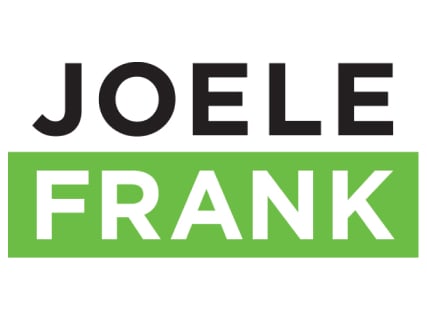Crisis Contained—Legal and PR Strategies for Preventing and Managing Corporate Meltdowns
Archive

NACD Northern California
Contact Us
Lisa Spivey,
Executive Director
Kate Azima,
Director of Partnerships & Marketing
programs@northerncalifornia.nacdonline.org
Find a Chapter
About The Event
Directors joined us at NACD Northern California’s private dinner focused on the topic of how, as a board director, you can effectively manage corporate crises and litigation before they escalate into public disasters, and what you should do if they go public.
A special thank you to our hosts Marc Axelbaum from Mintz as well as T.J. O’Sullivan and Kara Grimaldi from Joele Frank for leading an insightful discussion.
KEY TAKEAWAYS
Building Crisis Resilience
Board Awareness & Culture
- Don’t overlook or dismiss early-warning signs. As a director, sharpen your ability to spot potential issues by watching for subtle clues, inconsistencies, and patterns—and by pressing the executive team with deeper, more probing questions.
- Foster a culture of partnership with management so that surprises are minimized. Most CEOs are optimistic—boards should probe beyond the good news and “peel the onion.”
- Build trust with the CEO while still asking hard questions, including hypothetical downside scenarios.
Internal Systems & Oversight
- A best practice is to build robust relationships not only with the C-suite but also with their direct reports and internal audit where appropriate. Regular site visits and informal check-ins create visibility and open your eyes to potential issues.
- Whistleblower hotlines are often overlooked. Boards should ask—what is the process for screening reports, who reviews them, and how are trends and repeat complaints tracked? Ensure there is a system in place for pattern recognition to uncover systemic issues.
Scenario Planning & Black-Swan Preparedness
- Run crisis simulations annually or ideally quarterly to surface blind spots, and prepare general statements so that they are ready if needed.
- Maintain an up-to-date crisis plan that identifies external advisors (legal, forensic accountants, communications, insurance, etc.) and a clear communication path if a crisis should occur. Consider having a “risk register” with the top-three risks, mapped ownership, and advisors.
- Ask an artificial intelligence chatbot “if you were an activist, how would you attack our organization?” and question it to help identify vulnerabilities and find the value gaps.
Managing a Crisis
Fact-Finding & Messaging
- If a crisis hits, move quickly to establish facts with credible resources; the board should pressure-test management’s conclusions.
- The simplest message wins. Avoid getting lost in detail.
- Anticipate rumors, misinformation, and conspiracies. Distill communications to what is authentic, empathetic, and human.
Communications Strategies
- Press releases feel stale, but they can still be very useful for controlled messaging.
- Attention is one of our scarcest resources. Short video is a very effective medium—American Airlines’ video after the January 2025 airline-helicopter crash in Washington, DC, is a model for authentic, empathetic tone.
- Authenticity matters—old-school corporate voice has no currency. Show empathy and humanity (even frustration, in a moderated way).
- The CEO is usually the best spokesperson (if credible and able). If not, ensure the communication is under controlled circumstances. If the CEO is under investigation, the board chair can step in.
- Credible third parties speaking on your behalf can strengthen your narrative (e.g., the medical community during the Tylenol crisis).
- Decide when silence is strategic—sometimes “turning down the volume” is most effective.
- Different stakeholders may have direct relationships with the press; make sure to understand these nuances so that they don’t complicate the narrative.
Governance Role in Real Time
- Boards should check whether comms and legal strategies are aligned.
- Anything shared, even internally, should be with the mindset that it could be leaked; write accordingly.
- Engage government-affairs capabilities alongside comms/legal to manage political crosshairs.
Managing Recovery and Long-Term Trust
Rebuilding & Storytelling
- Anchor all messaging in clear brand identity and values—don’t sacrifice the company’s north star.
- Ego must go—leaders should present as humble and authentic.
- Not every situation requires an apology; match tone and message to the situation.
- Earnings calls are opportunities to tell the “comeback story”—showing how the company rebounded from the crisis.
- Survey customers to ensure the loudest critics don’t define the narrative; demonstrate the silent majority’s support if you can.
Learning & Institutionalizing
- Treat every crisis as an input for strengthening governance. Did systems, reporting lines, and communications processes work?

Thank you to our partners for making this event possible.
 |
 |
NACD Northern California
Contact Us
Lisa Spivey,
Executive Director
Kate Azima,
Director of Partnerships & Marketing
programs@northerncalifornia.nacdonline.org
Find a Chapter
By registering for an NACD or NACD Chapter Network event, you agree to the following Code of Conduct.
| NACD and the NACD Chapter Network organizations (NACD) are non-partisan, nonprofit organizations dedicated to providing directors with the opportunity to discuss timely governance oversight practices. The views of the speakers and audience are their own and do not necessarily reflect the views of NACD. |

